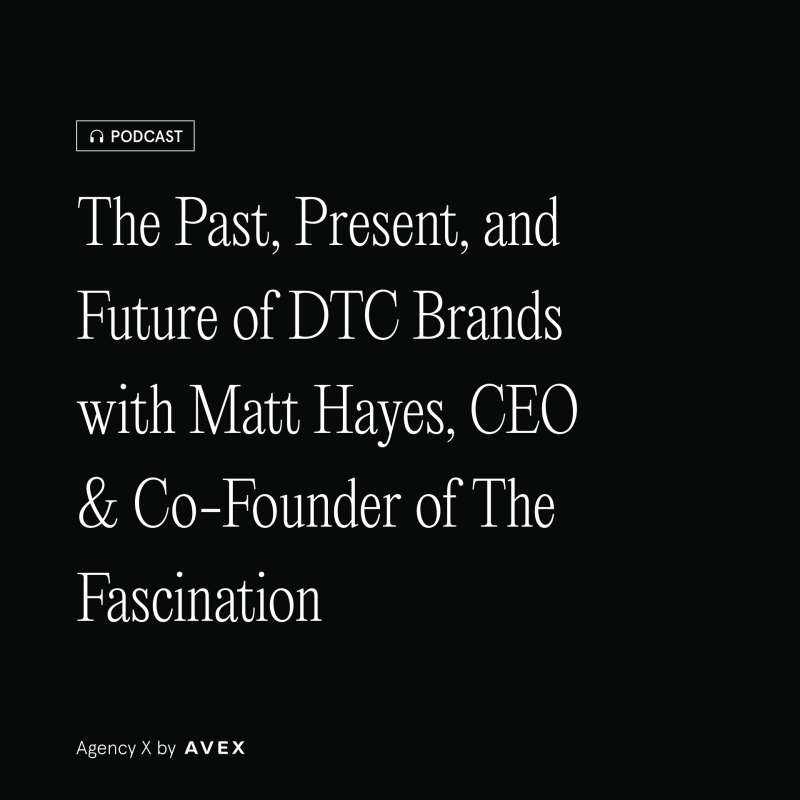Is an eCommerce Website Redesign Necessary For Your Business?

Quick Summary Design is at the heart of your eCommerce business. As such, careful consideration should go into every element of your website's design. That effort shouldn't stop after you've settled on a particular look.
Eventually, you'll need to reassess. Yes, the original design may have served its purpose in years past, but is it still delivering the exceptional experience your customers demand, or the conversions your business needs? If not, it's possible that you're overdue for an eCommerce website redesign.
Change can be intimidating, no matter how badly you need it, but a fresh design could be the only thing you need to get the strong customer engagement you desire. Keep reading to learn why redesigns are so important, and how you can time them to deliver a maximum return on investment.
Why Redesign?
Before you decide whether a redesign is right for your business, you need to understand why it's so important. After all, no matter which eCommerce platform you rely on, a lot of time and effort will go into revamping your website. You'll want to feel confident at the outset that the investment is worthwhile.
Low Sales
If your sales metrics are unimpressive, it's possible — but not absolutely certain — that your website's design could be to blame. After all, a poor design creates many problems that limit sales. Clunky performance may frustrate website visitors, thereby reducing their likelihood of converting. What's more, problematic design often negatively impacts search engine optimization, thereby making it difficult to get traffic in the first place.
Worried about low sales? Before you proceed with a redesign, you'll want to rule out other factors that might have a greater impact. For example, it's possible that the products themselves are to blame, or their marketing. Price could also be a factor, particularly if a competitor's products are cheaper. Pinpoint the biggest problems as soon as possible to determine the extent to which a new design is capable of boosting sales.
Brand Updates
Did your business recently undergo a rebrand? If you've shifted your message or the audience it's targeted at, you'll want to verify that the new website fits into your new aesthetic. Otherwise, your brand will come across as disjointed.
A website redesign will ensure that your brand remains consistent across many different platforms. Every element of the new site should reflect your updated brand.
Product Expansion
Perhaps your messaging has remained consistent, but now you've got a much greater range of products under the scope of your core brand. If your original website was not sufficiently scalable, additional offerings — and the accompanying traffic — could make your website slower and more frustrating to navigate.
Customers Struggle With Mobile Navigation
In all likelihood, a significant share of your customers will view your website from their mobile devices. A report from Insider Intelligence suggests that the mobile commerce market will reach an astounding $418.9 billion in 2024. At that point, mobile commerce will make up 44 percent of eCommerce sales.
If your page isn’t designed to accommodate the mobile shopping revolution, you risk missing out on a growing audience. Many customers simply won't purchase products from websites that aren't developed with mobile in mind.
When you're designing your mobile site, remember that webpages need to adjust to automatically fit the screens on a wide array of devices. When browsing a responsive website, users are less likely to have to constantly zoom and scroll.
You also need to keep your website consistent between desktop and mobile. Discrepancies that seem minor can confuse or even frustrate users who have come to expect specific design elements. While mobile designs must be distinct from their desktop counterparts, it's still important to maintain the aesthetic appeal and UI design across many platforms.
Outdated Appearance
Even if your current website is functional and your sales are decent, you can still consider a redesign. In the same way that a makeover can be appealing when you already like how you look, sometimes you're ready for something new.
Perhaps you love the look of your site, but it doesn't quite fit the modern aesthetic. A tailored redesign could retain everything you love about your current website while also making it feel fresh. If you're not sure whether your site is outdated, take a look at the competition. Your website should still stand out, but a cluttered or out-of-date design will almost certainly make your page seem stale, and your product stale with it.
Learn how we can enhance your site's Creative Direction
Slow Page Speed
Today’s customers are incredibly impatient. Most will ditch websites if they're forced to wait even a few short seconds longer than expected. As such, a sluggish site can be a huge liability. The typical rule of thumb for acceptable load time is under two seconds, so make every effort to accommodate this. Design is a core determinant of site speed. If your site isn't keeping up, it may be time for a new approach. Excessive graphics are often to blame, although issues with your coding may also be a problem.
First, determine whether your page is actually loading slowly. What you may think of as acceptable may, in fact, be far slower than the average customer is willing to tolerate. A variety of tools, like Google PageSpeed Insights, help you analyze your page metrics.
New CMS
Page speed and mobile-friendliness are just two of many components that influence user experience. The goal should always be a seamless website visit that makes it as easy as possible for users to find the information they need and complete purchases. The wrong content management system can make it incredibly difficult to accomplish all this, so it's only natural to want a fresh start when you give a new CMS a try.
This could be a great opportunity if you typically rely on WordPress but are tired of its limitations. After all, despite its many strengths, WordPress sometimes feels slow and clunky. An alternative approach might be shifting to Contentful for back-end content management while using React and Gatsby for the front end. The result? Greater control and a faster experience, along with greater flexibility to play with exciting tech opportunities.
Failure to Meet Accessibility Standards
Does your website live up to the Web Content Accessibility Guidelines (WCAG)? These make your site accessible for use by the broadest possible range of visitors, regardless of their physical limitations.
WCAG encompasses many aspects of web design, such as:
Avoidance of flashing effects or blinking lights, which can trigger seizures
The option to navigate all website functions with keyboards
Text alternatives for thumbnails and other imagery to help visually impaired users
Coordination of synchronized or time-based media with other interactive components
Color contrast and responsive design make content easily distinguishable
If you don't feel confident that the current version of your website provides a seamless experience for all users, you may want a redesign.
Concerns About Security or Data Privacy
Security should be a top priority in eCommerce, as customers want to know that their personal information will be handled with care. Web design goes hand-in-hand with security, especially if potential threats are addressed from the get-go. Transparency is also essential. All users should know how your website abides by privacy standards, and they should know when and why their information is being collected.
Should eCommerce Redesigns Ever Be Avoided?
Most eCommerce websites can benefit from at least occasional adjustments because at some point, something will have to change. Redesigning simply because you think you're supposed to, however, can be risky, especially if you end up abandoning features that customers appreciate.
eCommerce redesigns are best avoided when they lack purpose. If you struggle to identify a concrete reason for changing up your website's look or functionality, you're probably not ready for a redesign. This doesn't mean that you'll never need to make changes. Instead, continue with what's working and reassess in a year or two.
How Often to Redesign
Website redesigns should be performed when they're needed, rather than on a schedule. The "when" will vary somewhat from one eCommerce business to the next. In general, however, you should start pondering the potential of a redesign within three years of the most recent update.
When determining whether you need to redesign regularly or can afford to wait, consider the following:
Is your website suffering from any of the metric-related issues identified above? Slow speeds and high bounce rates, for example, suggest that a redesign will be necessary in the near future.
What is the pace of design in your industry? Some sectors see far more aesthetic updates than others. Lifestyle, beauty, and fashion, for example, require regular adjustments to ensure that companies within these niches remain relevant. In other areas of the eCommerce market, however, it may be standard practice for most businesses to wait a full five years before making major design updates. It's usually best to err on the side of greater redesign frequency, but you'll want to get a sense for what is typical among competitors, as well as what your customers expect.
When did you last update your brand? As mentioned, it's worth redesigning as soon as you make significant changes to your brand or your target audience. Swift business growth or changes in demand may also necessitate a different design approach. What works for a budding startup won't work for an established brand.
Cost of Redesign
Some redesign efforts are modest tweaks, while others involve complete overhauls. Are you redoing your whole website or just updating a few pages? How big is your website, anyways? The more you change, the more it will cost in time and money.
When planning a website redesign, it's important to consider not only the upfront cost, but the potential price of not redesigning your site. If you suspect that an awkward design is getting in the way of conversions or repeat business, the modest upfront expense of a new website could produce an astounding return on investment.
Ecommerce Website Redesign Best Practices
A positive return on investment is only possible if you have clear goals for your site and know what you need to change. To help, we've outlined several eCommerce site redesign best practices to keep in mind as you prepare to change things up.
Know When to Go Big — Or Keep it Modest
Once you've outlined your goals, determine whether they reflect the need for minor tweaks or a major overhaul. If you're rebranding, for example, you'll likely need to start from scratch to ensure that your updated brand is evident in every detail. If you just want to address minor navigation problems or improve page speed, small changes may be preferable.
The scope of your redesign will determine not only the cost, but also, how long the project takes and the process for unveiling the updated website. Get a sense of this as early as possible to avoid undesirable timeline or pricing surprises later on.
Don't Overload Pages With Video or Graphic Content
While the desire for compelling content is natural, you have to weigh it against the need for speed. To limit load times, highlight only the most impactful videos or graphics. Not only will this speed up your page, it will prevent visual clutter. Quality over quantity nearly always applies, so make sure that every image provides maximum value, rather than loading your page with several so-so graphics.
When in doubt, err on the side of less. This can be difficult to achieve in eCommerce -- it's always tempting to give customers as much information about products as possible. There is no simple answer as to how many images are too many, but load time metrics will be a good starting point.
Emphasize SEO
The keyword and linking solutions that served you well in the past may no longer prove effective. Keep current algorithms in mind as you determine how to optimize your site to achieve maximum search engine traffic. Don't forget that page load speeds are part of the search algorithm, so any improvements you make to load time will ultimately enhance your placement in search engine results as well.
A/B Test New Features
You feel confident that new additions to your website will serve customers well, but you could be missing pain points that make a customer's shopping experience worse. A/B testing is crucial for identifying these pain points that could make a promising redesign a disaster. This process may reveal aspects of the purchasing process that prevent shoppers from converting.
Diversity is the key to A/B testing success; even web features that seem straightforward should be examined to determine whether they're actually as user-friendly as they appear. When in doubt, plan to A/B test the following:
Sticky navigation bars
Calls to action
Color schemes
Video content
Size and type of product photos
Headlines
Heat mapping can be an effective A/B testing solution, as it determines precisely how users behave under various situations. Combined with other analytics, this provides a far-reaching overview of website strengths and weaknesses.
Use Sticky Buttons
Sticky buttons can dramatically improve website convenience. A sticky button is a fixed button that stays visible as users scroll through content or move from one page to the next.
Sticky navigation can take many forms. Some websites make extensive use of sticky buttons, while, in other cases, they're best used sparingly. In general, however, most users now expect this UX design function and will be disappointed if they're unable to find persistent navigation bars. Fixed top and left-side navigation tools are especially common, but sticky social media prompts or calls to action can trigger desired customer behaviors.
Improve PDP Photos
Product detail pages (PDP) should include high-quality images that highlight products and their most important features. Typically, PDP photo details will include measurements and color options. High-resolution photos reassure customers that your products match their expectations, while also capturing elements of the in-person shopping experience.
Work With an eCommerce-Oriented Design Team
While many of the best practices apply to all types of website redesigns, there's a real difference between eCommerce and service-focused businesses. From the platform to the content, every element of your redesign will be impacted by your status as an eCommerce business. Many talented web designers aren't specialists when it comes to the unique concerns that accompany product-focused websites. When possible, work with a design firm that primarily handles eCommerce pages.
Summing it Up: The Power of eCommerce Website Redesigns
By now, you can see that knowing when to redesign your website is far from simple.
Eventually, all eCommerce businesses will need to make modest updates, and sometimes, a complete overhaul. When that time arrives, targeted updates can make your page easier and more enjoyable to navigate, while also promoting higher customer engagement. Together, these improvements will help you overcome challenges that previously stood in the way of conversions.
Ultimately, the decision of whether — or how— to pursue an eCommerce website redesign requires personalized guidance. A discovery workshop can reveal the benefits of revamping your eCommerce website. From there, a Shopify Plus Partner can help you make strategic adjustments to give your website the boost it needs. Don't miss this opportunity to better serve your customers as you improve your bottom line.



